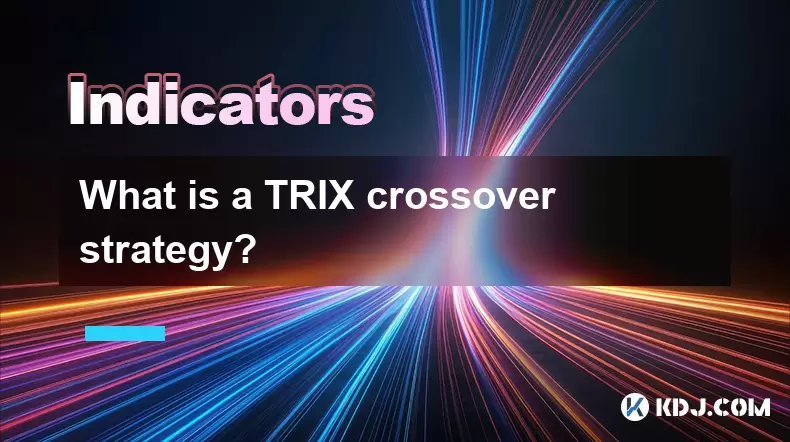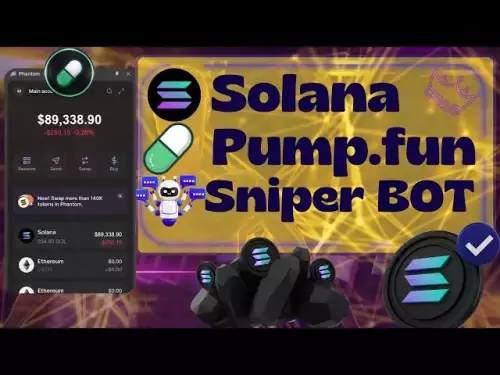-
 Bitcoin
Bitcoin $115100
-1.30% -
 Ethereum
Ethereum $4758
-1.70% -
 XRP
XRP $3.027
-2.19% -
 Tether USDt
Tether USDt $0.9998
-0.01% -
 BNB
BNB $883.2
-1.42% -
 Solana
Solana $204.0
2.62% -
 USDC
USDC $1.000
0.02% -
 Dogecoin
Dogecoin $0.2371
-0.97% -
 TRON
TRON $0.3612
-1.24% -
 Cardano
Cardano $0.9128
-2.19% -
 Chainlink
Chainlink $26.13
-3.93% -
 Hyperliquid
Hyperliquid $44.73
0.90% -
 Sui
Sui $3.715
-0.56% -
 Stellar
Stellar $0.4153
-2.41% -
 Ethena USDe
Ethena USDe $1.000
-0.04% -
 Bitcoin Cash
Bitcoin Cash $588.9
-2.06% -
 Avalanche
Avalanche $25.91
3.27% -
 Hedera
Hedera $0.2525
-1.45% -
 Litecoin
Litecoin $120.9
-1.35% -
 UNUS SED LEO
UNUS SED LEO $9.607
0.30% -
 Toncoin
Toncoin $3.382
-0.31% -
 Shiba Inu
Shiba Inu $0.00001329
-0.38% -
 Uniswap
Uniswap $11.38
-1.67% -
 Polkadot
Polkadot $4.222
2.83% -
 Aave
Aave $354.5
4.93% -
 Dai
Dai $0.0000
0.00% -
 Bitget Token
Bitget Token $4.704
-1.49% -
 Cronos
Cronos $0.1565
1.83% -
 Ethena
Ethena $0.7463
1.55% -
 Monero
Monero $265.8
-0.39%
What is a TRIX crossover strategy?
The TRIX crossover strategy uses momentum shifts to generate buy/sell signals in crypto trading, helping filter noise and identify trend reversals.
Aug 13, 2025 at 11:36 am

Understanding the TRIX Indicator in Cryptocurrency Trading
The TRIX (Triple Exponential Average) indicator is a momentum oscillator used in technical analysis to identify potential trend reversals and price momentum in cryptocurrency markets. It is derived by applying a triple exponential smoothing to a single price series, typically the closing price. The result is a line that oscillates around a zero line, helping traders spot overbought or oversold conditions and detect shifts in market sentiment. The core idea behind TRIX is to filter out minor price fluctuations and focus on significant, sustained price movements. When applied to volatile assets like Bitcoin or Ethereum, the TRIX indicator can reduce noise and highlight stronger trend signals.
The formula for TRIX involves calculating the percentage rate of change of a triple-smoothed exponential moving average (EMA). This process includes first applying an EMA to the closing price, then applying another EMA to the result, and finally applying a third EMA. The TRIX value is the percentage difference between the current triple-smoothed EMA and the previous period’s value. This makes it highly responsive to sustained momentum while minimizing false signals from short-term volatility.
What Is a TRIX Crossover Strategy?
A TRIX crossover strategy involves using the TRIX line in conjunction with a signal line—usually a moving average of the TRIX line itself—to generate buy and sell signals. The most common configuration is to use the TRIX line and a 9-period EMA of the TRIX line as the signal line. When the TRIX line crosses above the signal line, it generates a bullish signal, suggesting upward momentum is building. Conversely, when the TRIX line crosses below the signal line, it indicates a bearish signal, implying downward momentum may be taking over.
This strategy is particularly useful in cryptocurrency trading due to the high volatility and frequent trend reversals in digital asset markets. The crossover acts as a dynamic trigger, helping traders enter or exit positions based on momentum shifts rather than price alone. Because TRIX is based on exponential smoothing, it reacts more slowly than some other oscillators, which can reduce the number of false signals during choppy market conditions.
Setting Up the TRIX Crossover on a Trading Platform
To implement the TRIX crossover strategy, traders must configure the indicator on a charting platform such as TradingView, Binance Trading Terminal, or MetaTrader. The following steps outline how to set this up:
- Open the chart of the desired cryptocurrency pair (e.g., BTC/USDT).
- Navigate to the indicators section and search for “TRIX”.
- Add the TRIX indicator to the chart.
- Adjust the period setting for the TRIX calculation—common values are 12, 15, or 18 periods.
- Enable the signal line, typically set to a 9-period EMA of the TRIX line.
- Confirm that both the TRIX line and the signal line are visible on the chart.
Once configured, the chart will display two lines: the primary TRIX line and the slower-moving signal line. Traders should ensure the indicator is correctly applied by verifying that crossovers align with noticeable changes in price momentum. Some platforms allow customization of line colors and thickness for easier visual interpretation.
Executing Buy and Sell Signals Using TRIX Crossover
Generating actionable signals from the TRIX crossover strategy involves monitoring the interaction between the TRIX line and its signal line. The following conditions define entry and exit points:
- A buy signal occurs when the TRIX line crosses above the signal line, especially when both lines are below the zero centerline, indicating a potential reversal from a downtrend.
- A sell signal is triggered when the TRIX line crosses below the signal line, particularly when both lines are above zero, suggesting weakening bullish momentum.
- For added confirmation, traders may wait for the TRIX line to cross the zero line after a crossover, ensuring the momentum shift is strong enough.
- To avoid whipsaws, some traders use volume filters or combine the TRIX crossover with support/resistance levels.
For example, if the TRIX line for ETH/USDT crosses above the signal line while both are in negative territory, and the price begins to rise with increasing volume, this may confirm a valid long entry. Conversely, if the TRIX line drops below the signal line during an uptrend and the price fails to make new highs, it may be time to exit or short the position.
Filtering False Signals and Enhancing Accuracy
While the TRIX crossover strategy is effective, it is not immune to false signals, especially in sideways or low-volume markets. To improve reliability, traders often apply additional filters:
- Use volume analysis to confirm that price movements accompanying crossovers are supported by strong trading volume.
- Combine the TRIX crossover with trend-following indicators such as the 50-period and 200-period EMAs to ensure trades align with the broader market direction.
- Apply price action confirmation, such as bullish engulfing or bearish rejection candles, at the time of the crossover.
- Avoid trading crossovers that occur near major support or resistance levels unless there is a clear breakout.
For instance, if a TRIX crossover occurs during a consolidation phase on a 4-hour BTC chart but the price is trapped between $60,000 and $62,000, the signal may lack conviction. Waiting for a breakout beyond these levels with rising volume increases the probability of a successful trade.
Backtesting the TRIX Crossover Strategy
Before deploying the TRIX crossover strategy in live markets, backtesting on historical data is essential. This process helps assess the strategy’s performance across different market conditions:
- Select a cryptocurrency pair and timeframe (e.g., 1-hour or 4-hour charts).
- Apply the TRIX indicator with the chosen parameters (e.g., 15-period TRIX, 9-period signal line).
- Manually or programmatically identify all crossover events over a 3- to 6-month period.
- Record the outcome of each trade, including entry, exit, stop-loss, and profit target.
- Calculate key metrics such as win rate, risk-reward ratio, and maximum drawdown.
Backtesting reveals whether the strategy performs better in trending markets or struggles during ranging conditions. It also helps fine-tune parameters to suit specific assets—Bitcoin may respond better to longer TRIX periods, while altcoins might benefit from shorter settings due to their higher volatility.
Frequently Asked Questions
Can the TRIX crossover strategy be used on all cryptocurrencies?
Yes, the TRIX crossover strategy can be applied to any cryptocurrency with sufficient liquidity and price history. However, its effectiveness varies. Major coins like Bitcoin and Ethereum tend to produce more reliable signals due to stronger trends, while low-cap altcoins with erratic price action may generate frequent false crossovers.
What timeframes work best with the TRIX crossover?
The strategy performs well on 1-hour, 4-hour, and daily charts. Shorter timeframes like 5-minute or 15-minute may produce too many signals, increasing the risk of noise. Longer timeframes provide higher-quality signals but fewer trading opportunities.
How do I adjust TRIX settings for different market conditions?
In strong trending markets, use standard settings like 15-period TRIX with a 9-period signal line. In choppy or ranging markets, increasing the TRIX period (e.g., to 20 or 25) can reduce sensitivity and filter out minor fluctuations.
Is the TRIX crossover suitable for automated trading bots?
Yes, the TRIX crossover logic can be coded into algorithmic trading systems. The clear rules—crossover above or below the signal line—make it ideal for automation. Ensure the bot includes filters like volume thresholds or trend confirmation to improve performance.
Disclaimer:info@kdj.com
The information provided is not trading advice. kdj.com does not assume any responsibility for any investments made based on the information provided in this article. Cryptocurrencies are highly volatile and it is highly recommended that you invest with caution after thorough research!
If you believe that the content used on this website infringes your copyright, please contact us immediately (info@kdj.com) and we will delete it promptly.
- Whitelist Frenzy: Is This the Top Meme Coin of 2025?
- 2025-08-24 08:45:22
- Ruvi AI: The AI Token Igniting a Cardano-esque Rally?
- 2025-08-24 07:45:12
- Altcoins in a Market Dip: Is Polygon (MATIC) Poised for a Reversal?
- 2025-08-24 07:05:13
- Crypto, Pepe, and Investment: Navigating the Meme Coin Mania in 2025
- 2025-08-24 06:45:29
- VanEck's JitoSOL ETF: A New Era for Solana and Institutional Crypto
- 2025-08-24 07:45:12
- Dogecoin, Shiba Inu, and the Rise of New Crypto Contenders
- 2025-08-24 08:05:30
Related knowledge

What does it mean when the +DI and -DI cross frequently in the DMI indicator but the ADX is flattening?
Aug 11,2025 at 03:15am
Understanding the DMI Indicator ComponentsThe Directional Movement Index (DMI) is a technical analysis tool composed of three lines: the +DI (Positive...

What does the sudden appearance of a "dark cloud cover" candlestick pattern during an uptrend indicate?
Aug 13,2025 at 11:35am
Understanding the 'Dark Cloud Cover' Candlestick PatternThe dark cloud cover is a bearish reversal pattern in technical analysis that typically appear...

What does it mean when the moving average, MACD, and RSI all send buy signals simultaneously?
Aug 11,2025 at 01:42pm
Understanding the Convergence of Technical IndicatorsWhen the moving average, MACD, and RSI all generate buy signals at the same time, traders interpr...

What does it mean when both the KDJ indicator and the RSI show overbought signals simultaneously?
Aug 13,2025 at 11:35am
Understanding the KDJ Indicator in Cryptocurrency TradingThe KDJ indicator is a momentum oscillator derived from the Stochastic Oscillator, widely use...

What does it mean when the price is trading above the SAR indicator but the red dots are densely packed?
Aug 09,2025 at 11:49pm
Understanding the SAR Indicator and Its Visual SignalsThe SAR (Parabolic Stop and Reverse) indicator is a technical analysis tool used primarily to de...

What does it mean when the candlestick chart forms a "Morning Star" but trading volume is sluggish?
Aug 12,2025 at 06:28pm
Understanding the Morning Star Candlestick PatternThe Morning Star is a three-candle bullish reversal pattern commonly observed in cryptocurrency pric...

What does it mean when the +DI and -DI cross frequently in the DMI indicator but the ADX is flattening?
Aug 11,2025 at 03:15am
Understanding the DMI Indicator ComponentsThe Directional Movement Index (DMI) is a technical analysis tool composed of three lines: the +DI (Positive...

What does the sudden appearance of a "dark cloud cover" candlestick pattern during an uptrend indicate?
Aug 13,2025 at 11:35am
Understanding the 'Dark Cloud Cover' Candlestick PatternThe dark cloud cover is a bearish reversal pattern in technical analysis that typically appear...

What does it mean when the moving average, MACD, and RSI all send buy signals simultaneously?
Aug 11,2025 at 01:42pm
Understanding the Convergence of Technical IndicatorsWhen the moving average, MACD, and RSI all generate buy signals at the same time, traders interpr...

What does it mean when both the KDJ indicator and the RSI show overbought signals simultaneously?
Aug 13,2025 at 11:35am
Understanding the KDJ Indicator in Cryptocurrency TradingThe KDJ indicator is a momentum oscillator derived from the Stochastic Oscillator, widely use...

What does it mean when the price is trading above the SAR indicator but the red dots are densely packed?
Aug 09,2025 at 11:49pm
Understanding the SAR Indicator and Its Visual SignalsThe SAR (Parabolic Stop and Reverse) indicator is a technical analysis tool used primarily to de...

What does it mean when the candlestick chart forms a "Morning Star" but trading volume is sluggish?
Aug 12,2025 at 06:28pm
Understanding the Morning Star Candlestick PatternThe Morning Star is a three-candle bullish reversal pattern commonly observed in cryptocurrency pric...
See all articles

























































































